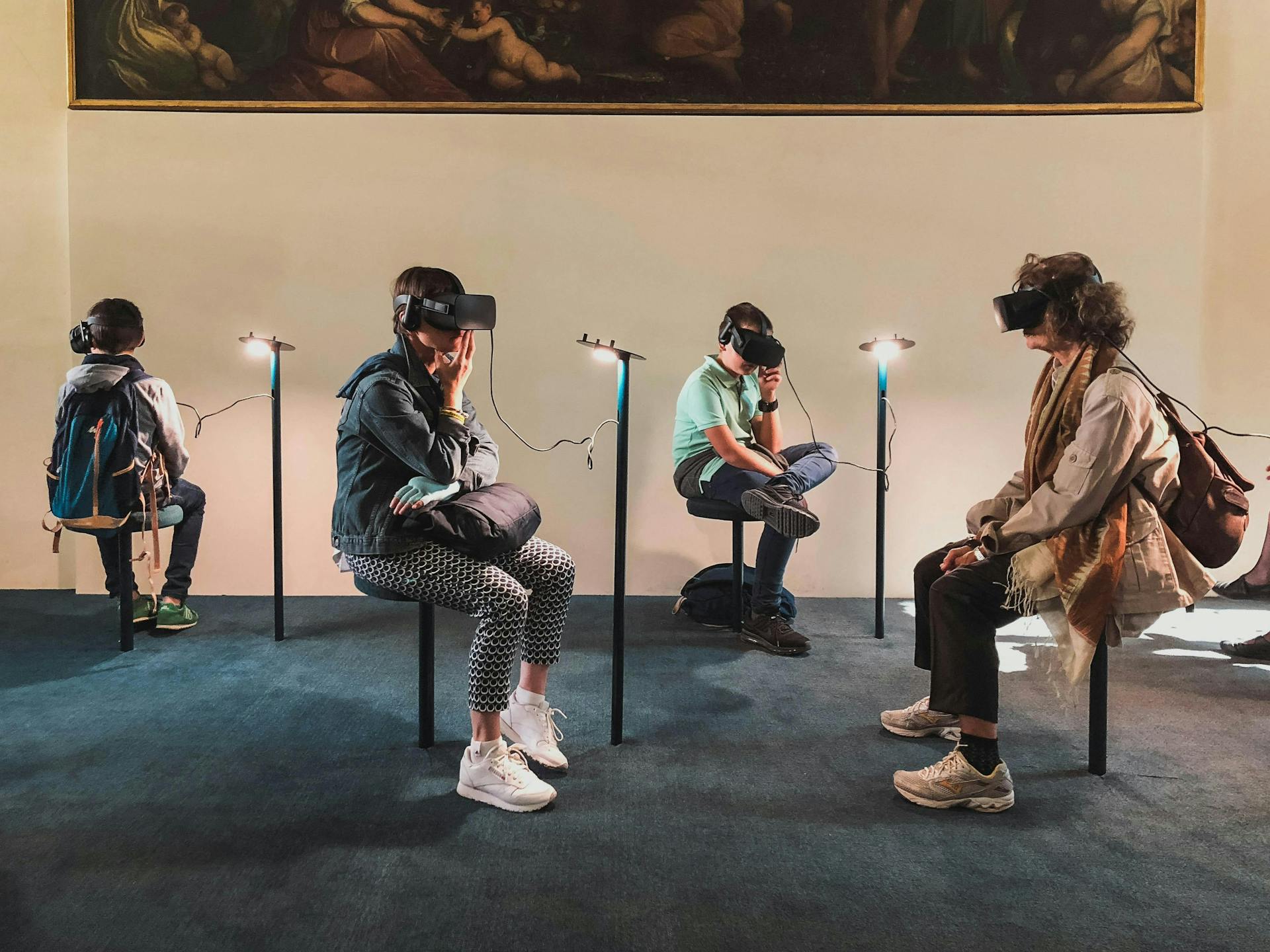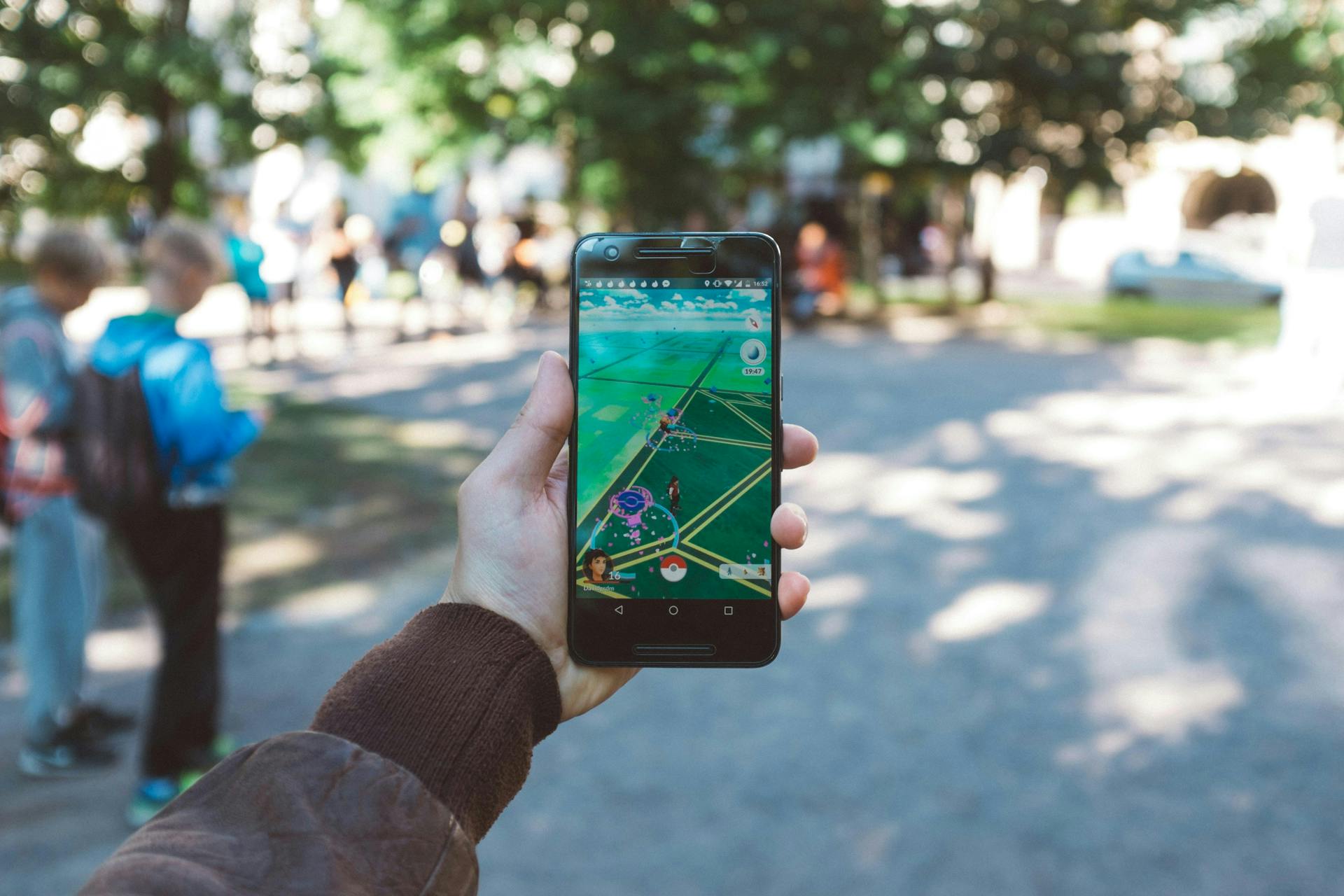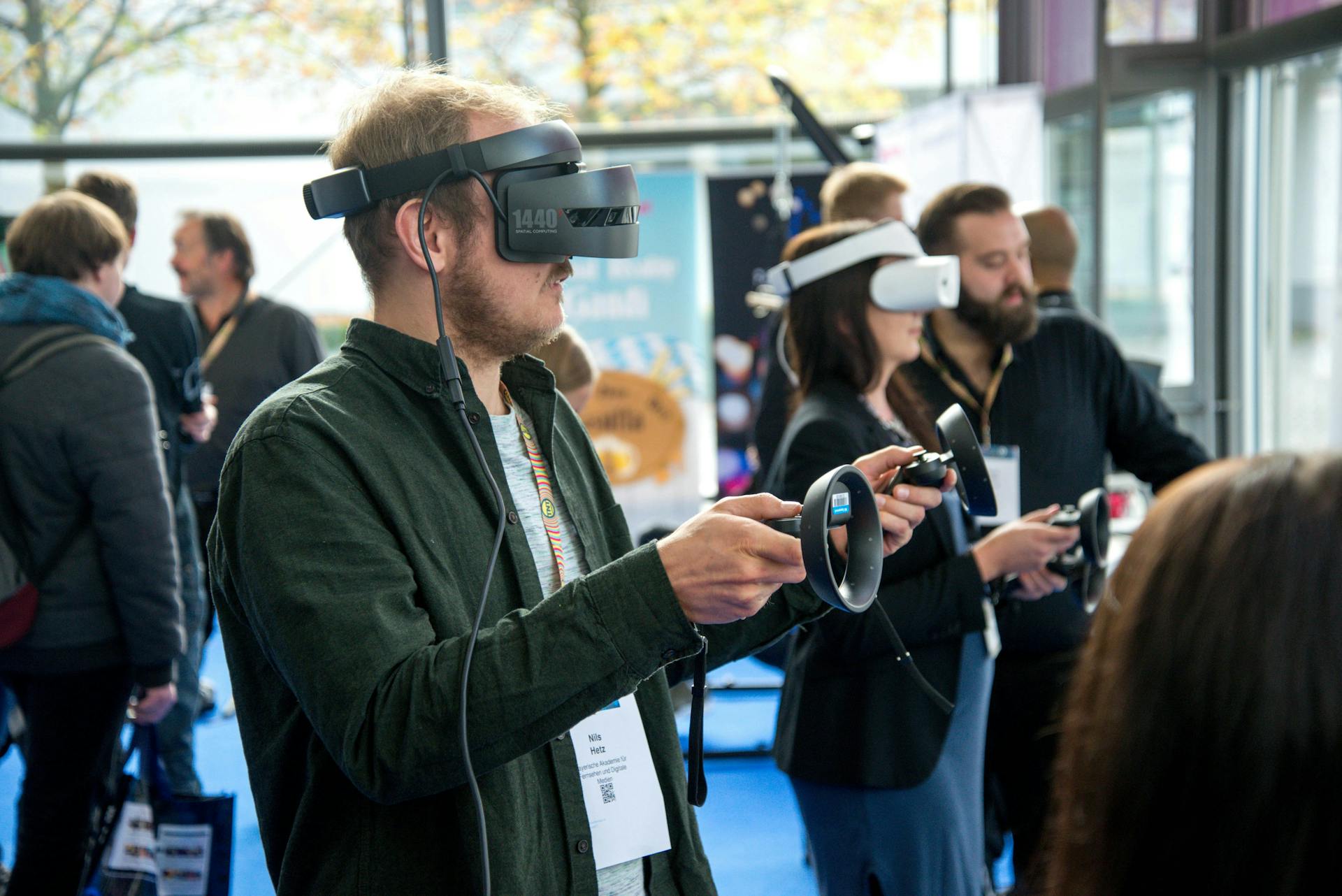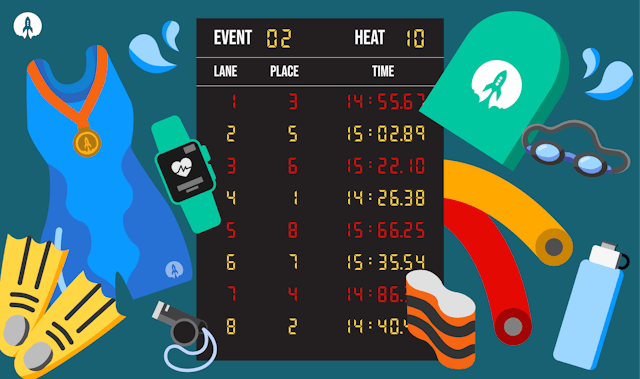The Rocketmakers guide to AR and VR

Are you interested in creating an augmented reality (AR) or virtual reality (VR) application to help your business, but don’t know which type to choose?
You’re in luck! We’ve spoken to our top experts in AR and VR (known collectively as “XR”) and drawn up this helpful guide to three different options to help you make your choice.
1) Type 1 - AR for phones
If you think augmented reality devices are still out of reach for most people, we’ve got news for you: virtually every smartphone in the world can function as an AR viewer. This is done by using the phone’s own internal cameras and displays, and building an app to display AR images with these is relatively straightforward.
The advantages for AR created to be consumed on a smartphone are very clear:
- The potential audience is huge.
- The technology is relatively inexpensive to implement.
- A high-quality AR display is not necessarily complicated. The virtual objects need to be appealing and made with high-quality designs, but the real world provides the rest.
There are also real disadvantages to a phone-based AR display which must be considered.
- Phones are not ideal mechanisms for displaying AR. They tend to only cover a fraction of a field of view, and most users will be reluctant to hold them up for more than a few minutes at a time.
- Outside of games and marketing, there are no phone-based AR applications which have had much business success. There are some exciting new tools for AR coming to iPhones which might change this, but so far the jury is still out!

2) Virtual Reality
When most people think of immersive environments, they typically tend to think of observing a VR landscape while wearing a headset. The number of people who own VR headsets is growing, but we’re still a long way from the sort of market penetration enjoyed by smartphones.
Here are some advantages:
- Virtual Reality is much more immersive than AR. You can place the user on the moon, at the bottom of the ocean, or anywhere else the imagination can think of. This means the range of potential applications for VR is much broader.
- VR headsets have come a long way in recent years. They are more affordable, lighter and easier to wear for extended periods, making VR a more suitable option for applications that require longer engagement.
- VR adoption is growing rapidly, spurred by better technology and lower prices.
But of course, there are disadvantages:
- The number of VR users is growing, but the potential audience is still small for B2C applications. 10s of millions of headsets are now sold each year, but this is still a fraction of global smartphone sales.
- VR environments need more design and development work than AR products. This means they are usually more expensive to create, and will likely result in higher running costs. The highly-immersive nature of VR means that if you take design shortcuts, it tends to show!

3) AR for headsets
While AR is experienced by most people on their phones, there is also a higher-end version which can be displayed on special headsets that function similarly to VR headsets.
These headsets have come a long way since Google Glass, but few people have them yet. This is because they’re relatively expensive (roughly £3,000), and the technology is more limited than the typical VR headset (both in terms of the range of view, and the complexity of augmented reality objects they can display). B2C applications for this type of AR tend not to be commercially viable, but there are still some definite advantages.
- AR displayed on headsets are suitable for much more complex applications than AR for phones.
- Headsets are much better than phones for applications that depend on extended use.
- Like AR for phones, AR for headsets requires less design investment than developing a full VR environment.
The disadvantages for AR for headsets are still significant, however:
- AR headsets are really expensive. These applications are best for large companies and institutions who can fund the purchase of headsets for users to wear.
- The technology in AR headsets is improving, but still provides a much poorer user experience than VR headsets. Current models lack the processing power to generate overly complex objects, and these objects will disappear if users turn their heads too far to the left or right.
Which XR type is best for you?
Whatever type of XR you are interested in, you’ll find an expert at Rocketmakers that can talk you through a full range of options.
We’ve been building phone-based AR projects for years, from our virtual rocket that fires out of any Rocketmakers logo, to our award-winning Castle of Cans pub game.
We also work in VR environments every day. This is to support a technology we’re building called Beam, which makes it possible to update VR and AR environments in real time, and capture analytic updates from users to help content managers choose the right updates.
We are also arguably one of the most experienced teams anywhere when it comes to building AR applications for headsets. In 2019 we made headlines worldwide when we created an AR app to help Team Bath Racing construct their car for the Formula Student competition, helping them produce the world’s first competitive racecar to be built using AR technology.
If you’re interested in hearing more, but sure to get in touch. We will help you explore whether or not XR technology is a good fit for your business, and, if it is, help you choose the technology that will provide the best solution.
Images by Lucrezia Carnelos, David Grandmougin and Stephan Sorkin on UnSplash.



